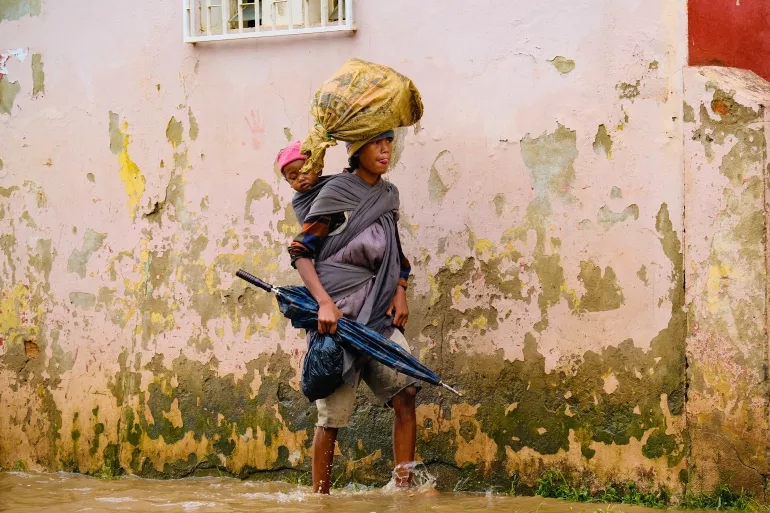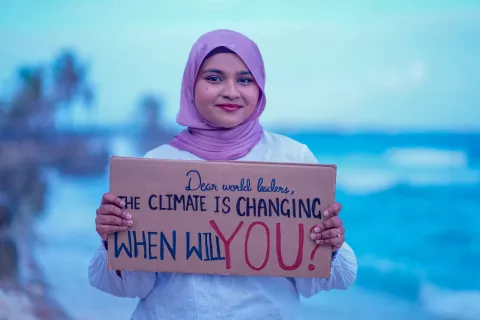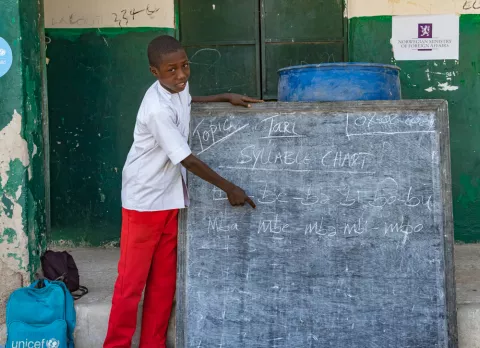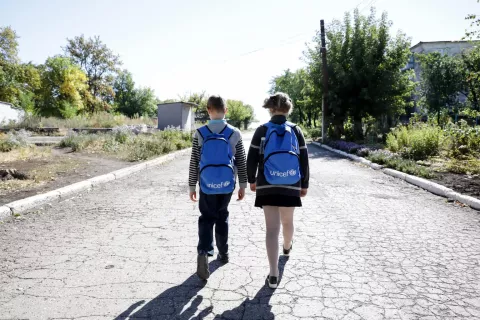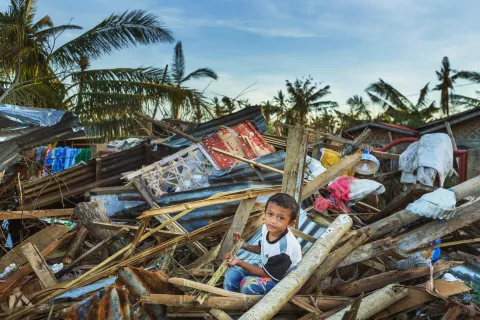The world’s most marginalised children are already suffering the unavoidable impacts of climate change – death, displacement, malnutrition, the loss of education, and the destruction of traditional ways of life. These consequences are collectively known as climate-related loss and damage.
Since children have their whole lives ahead of them, such losses or damages suffered at an early age can lead to a lifetime of lost opportunity and can even affect future generations. That makes loss and damage related to climate change one of the greatest intergenerational injustices facing children today, threatening the rights enshrined in the United Nations Convention on the Rights of the Child – such as the rights to survive and thrive, to protection, to clean water and food, to education and health, and to cultural heritage and indigenous knowledge.
Children have contributed the least to the climate crisis, yet they are suffering from its impacts more acutely than any previous generation.
The world has looked to climate finance to compensate those who have suffered the most due to climate change. Unfortunately, children’s unique needs and concerns have been largely overlooked in climate finance debates, a trend also reflected in climate finance allocations. In 2022, nations agreed to set up a dedicated Loss and Damage Fund (L&D Fund), which is not only a momentous milestone in climate negotiations, but also a chance to learn from past experiences of financing climate action. In fact, it is an opportunity to deliver climate justice for children on the frontline of the climate crisis.
The case for a child-centred Loss and Damage Fund
Children’s first-hand accounts corroborate that climate-related loss and damage is part of their everyday realities. In a new report, Loss and Damage Finance for Children, 55 children, aged between 11 and 18, from diverse geographies share their experiences of loss and damage and recount memories of missing out on schooling, the loss or damage to their family home or livelihood, and even the loss of friends and family.
The children who shared with us their experiences unanimously demanded a seat at the table where discussions and decisions about loss and damage finance allocations take place. Their experiences and words make it clear that putting children’s rights at the heart of loss and damage finance is a matter of climate justice.
If we only have leaders at the top, deciding everything about the Loss and Damage Fund and how the fund should be spent, then they won't fully understand how children are experiencing loss and damage.” – George, 16, Zambia
The state of climate finance
While the COP28 decision to launch the new L&D Fund recognizes youth as key stakeholders to participate in and shape the design, development and implementation of activities financed by the Fund, it only mentions children twice.
To date, less than 2.4 per cent of climate finance has gone towards projects incorporating activities responsive to children’s needs.
At the same time, the way climate finance works now is pushing the countries most affected by the climate crisis into a debt crisis. When countries vulnerable to climate change are locked into a vicious cycle of indebtedness, with debt accumulating in tandem with accelerating losses and damages, compromises in public spending on essential services like education and healthcare often become inevitable. This has dire implications for children’s well-being and development.
It is important that the new L&D Fund, and loss and damage finance more broadly, break away from existing climate finance approaches.
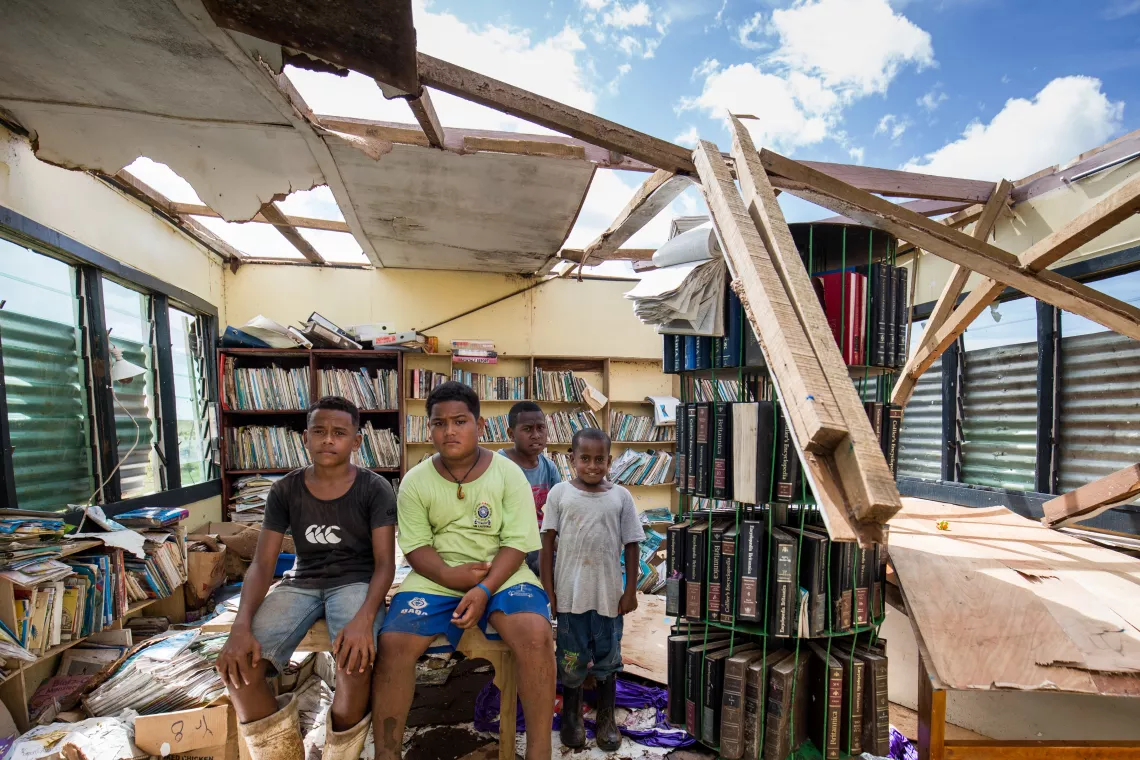
A chance for children
The L&D Fund is a chance to ensure that present and future generations of children can thrive and fully exercise their rights. But this requires:
- recognizing children’s unique needs and vulnerabilities;
- facilitating their participation in decisions about the allocation and use of funding;
- ensuring the equitable distribution of loss and damage finance; and
- restoring children’s dignity when losses and damages are unavoidable.
Above all, it requires funding – sufficient, equitable, accessible and sustainable resources for meaningfully addressing the losses and damages suffered by children and their families.
It is crucial then that children’s rights are elevated, and their voices are amplified in discussions about implementing the L&D Fund as well as in setting the new global goal on climate finance. It is essential that this goal – called the New Common Quantified Goal – not only recognizes loss and damage as a critical pillar of climate finance, but that it is informed by the needs of climate-vulnerable children. We must not miss this opportunity to deliver climate justice for children.
Cristina Colón is Policy Specialist, UNICEF Innocenti
Lucy Szaboova is Climate Change and Environment Consultant and Research Fellow, University of Exeter
Learn more about why child-responsive loss and damage finance is urgently needed and how it can be achieved. Read the report Loss and Damage Finance for Children by UNICEF, Save the Children, Plan International, the International Centre for Climate Change and Development (ICCCAD) and the Loss and Damage Youth Coalition (LDYC).

